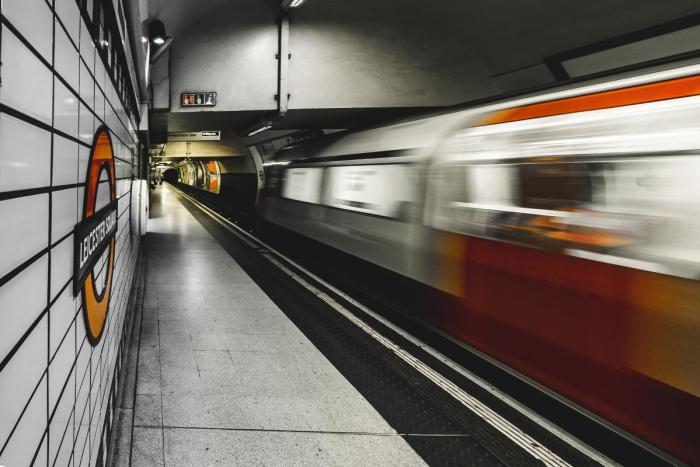
Details
Solution type
The London Underground used to be a cool place. But due to the heat generated by trains and passengers over the years that is no longer the case. Since the underground started to operate, the temperature of the clay in the tunnels has risen to something like 15 ºC. And it is expected to increase even further as long as the underground is in operation.
To solve this problem, both heat exchangers and a heat pump are now installed. The system allows for underground heat to be used in a district heating network during the cold season, and for the ingoing air to be cooled during the warm season.
Background
Temperatures in the London underground have been steadily rising since it began operation in the 19th century; the ambient temperature of the London clay around the tunnels was originally 14°C, and in the 1920s the underground was advertised as somewhere to go to keep cool in hot summers.[1] However, by 1940 the temperature in the clay had risen to 21ºC, and it is now around 30ºC in the summer – it is no longer an effective heat sink. The heat in the tunnel comes largely from the trains, as detailed in the table below.[1]
| Heat source | % |
| Braking losses | 38% |
| Mechanical losses | 22% |
| Drive losses | 16% |
| Train auxiliaries | 13% |
| Tunnel systems | 4% |
| Station systems and passengers | 4% |
| Train passengers | 3% |
Although the heat increase can be reduced by measures such as regenerative braking, several factors will result in further increases in temperature:
- Rising ambient temperatures in London.
- Plans to add air conditioning to the deep line tube trains will result in more hot air being dumped into the tunnels.
- Line upgrades will mean more frequent trains.
The network is currently cooled using vents in the tunnels and at stations. Large fan systems are used to extract air, and in some cases, these can operate in reverse and push fresh air into the system. Although there are 110 vents on the network, the majority are on the modern section of the Jubilee line; some lines (such as the Central Line) have very few vents, and the land use above the lines prevents new ones from being built.[1] Currently, most of the heat is absorbed in the tunnel walls and approximately 10% of the heat is removed by mechanical ventilation.[2]
The systems are less effective in summer when ambient temperatures outside mean that pumping air into the tunnels does not result in cooling. Some vents used for pumping air into the network have had cooling systems installed, with the air-cooled to 4–6ºC below the ambient temperature; however, these systems have high electricity consumption and are difficult to install due to the amount of space required.[1]
The heat from the underground is used for district heating
The technological solution for recovering heat from the London underground is to install a heat exchanger in the vents used to extract hot air from the network. With the use of a heat pump, this can create water hot enough to be used in a district heating network.
The heat pump is being integrated with the existing building stock and heating systems. One of the biggest challenges is to operate the heat pump at a temperature which optimises the efficiency of the heat pump and yet is fully compatible with the existing, and potentially quite old, secondary heating system. In order to achieve this, an ammonia refrigerant heat pump is specified, which maintains efficiency at a higher than normal temperature for heat pumps. The network temperature is also reduced, to have a greater delta T and lower return temperatures.
This system has the advantage of being able to be used in reverse in the summer; the fan is put into reverse, and heat is extracted from the warm summer air before being pushed into the tunnels at a lower temperature. This creates both heat for the district heating network and cooler air for the London underground.
A case study can be found at: Capture of waste heat and extension of the seed network in Islington, London, UK
No “best practice” available
The level of innovation within this project means that there is no real best practice template in place to replicate. There are however construction, health and safety, and technical standards in place for the project.
To ensure that best practice is achieved then all contractors have been appointed using a full OJEU public procurement process where they were evaluated for both quality and best value. Both project teams work closely together to ensure that relevant engineering and building standards are adhered to. The design process involves a series of stages of sign-off by each stakeholder to ensure best practice and suitability for both London Underground and the London borough of Islington.
Related Celsius content:
Heat recovery from the London Underground in Islington, United Kingdom
Making use of excess heat: Assessment methodology for urban excess heat recovery solutions
Open District Heating in Stockholm, Sweden
References
- Jamie Burn (2014) Cooling the Tube & Bunhill, Presentation given at the Celsius Conference, 11 Nov 2015
- Handbook_-_25_cases_of_urban_waste_heat_recovery
Replicability |
Low |
Medium |
High |
|---|---|---|---|
| Authorizative easiness | x | ||
| Adaptability to different climate conditions | x | ||
| Technology easy-to-implement (No need of specific technical requirements) | x | ||
| Easy-to-implement (No need of specific technical requirements) | x | ||
| Easy-to-operate (No need of specific technical requirements) | x | ||
| Opportunity of integrating waste energy sources | x | ||
| CAPEX needed for the deployment of the solution | x |
